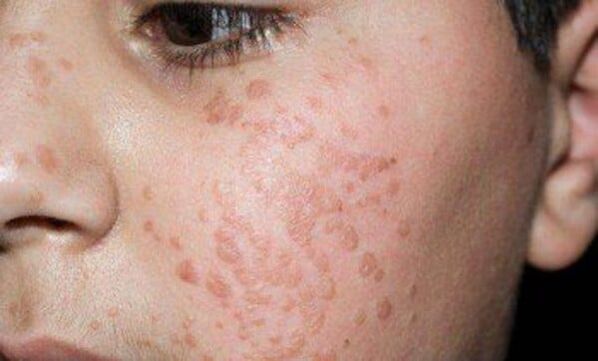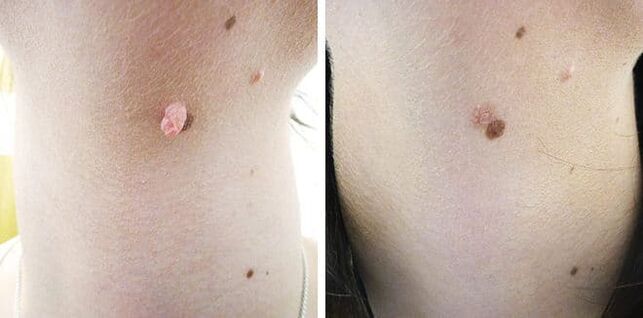Papilloma and condyloma are small growths on the skin of a viral nature. You need to be able to distinguish between them in order to detect potentially dangerous formations in time and take necessary measures. The main factor distinguishing between papilloma and condyloma is the type of viral pathogen.
The cause of the tumor
There are more than one hundred different strains of human papillomavirus (HPV). HPV enters the human body through family contact or unprotected sex. The child may be infected by the mother while passing through the birth canal.
The formation of growth indicates the rapid division of cells in the basal layer of the skin. This happens under the influence of a virus. In most cases, the activation of the virus is related to the reduction of immune defense. Depending on the strain, papilloma or condyloma acuminata appears on the body.
Features of papilloma
Papilloma is a benign tumor that does not cause discomfort other than being aesthetically pleasing. Features of papilloma:
- Soft homogeneous structure;
- The presence of legs
- Small size (up to 10 mm in diameter);
- Moderate pigmentation.
Papilloma is located anywhere on the body, except for the mucous membranes of the genitals. Usually, the color of growth varies from natural skin to pink tones, but highly pigmented papilloma is not pathological either. Hair growth on the body of papilloma is a variant of normality.

Papillomas are not dangerous if they do not interfere with the patient and are not accidentally injured in daily life. The formation of this type of growth is due to the action of 2, 7 and 28 virus strains. You may get these types of HPV in your daily life and during sexual intercourse.
The characteristics of condyloma acuminatum
There are two types of warts-sharp growth and extensive. The first type of HPV infection occurs, and widespread growth is one of the symptoms of syphilis.
The location of genital warts is the mucous membrane, mainly the genitourinary area, and skin folds rubbing against clothes.
The structure of genital warts is papillary. The stratum is attached to the thin stems, and the growth is supplied by small blood vessels and capillaries. Unlike papilloma, condyloma acuminatum is usually inflamed and ulcers may occur in the growth body.
Condyloma acuminatum is caused by 16, 18, 54 viruses. These types of HPV are potentially dangerous, especially for women. There is a direct relationship between these types of viruses and the development of cervical cancer. The infection occurs through sexual intercourse.
How to distinguish between papilloma and condyloma acuminatum?
It is easy to notice the external differences between the growths in the photos-papilloma is homogeneous, while condyloma acuminata has a fine papillary structure.
- The difference between papilloma and wart is the color of growth. Papillomas can be highly pigmented, and warts are usually very light in color and indistinguishable from mucous membranes.
- HPV can trigger the development of papilloma, spread through family contact, use of personal hygiene products, and even through handshake (in the case of minimal skin trauma). Warts are only transmitted sexually.
- The wart becomes inflamed. The papilloma can grow larger, showing signs of inflammation and injury, but this is only the result of trauma.
- The shape of a papilloma is mainly a round or oval "head" located on a soft stem. Condyloma acuminatum has an irregular outline and can be arranged in clusters. For genital warts, narrowing from the stem to the end is characteristic, which makes them distinguishable from papilloma.
- The different types of growth are due to different strains of the virus.

It is important to remember the main difference between papillomas and warts-growths on the genitals and mucous membranes must be removed.
Why is growth dangerous?
Papilloma and condyloma acuminatum are generally considered safe tumors on the skin, but in the second case, the risk of degenerating benign cells into malignant cells is higher.
Condyloma acuminata is a skin manifestation of the effect of the virus carcinogenic type. Years of research have established the relationship between HPV and cervical cancer. Timely diagnosis and further removal of genital warts can help significantly reduce the risk of cancer in women.
Growth can be located not only on the skin and external genitalia, but also on the vagina and cervix. Due to the particularity of blood circulation in the genitals, condyloma acuminatum has obtained sufficient nutrition and can grow rapidly. In gynecology, the condyloma acuminata sometimes located on the vaginal wall grows up to 10 cm in diameter.
Remove indication
Warts must be removed, even if they do not cause discomfort. This is mainly due to the risk of infection by sexual partners.
Whether to remove the papilloma located on the skin is a personal question for each patient. When the growth body is damaged, the risk of benign papilloma degenerating into a tumor increases. This may be caused by friction with clothing during the sanitation procedure, accidental damage to nails or towels.
You should consult a dermatologist if:
- The size of the papilloma has greatly increased;
- Feel uncomfortable when pressing;
- Noticing bleeding or purulent discharge;
- Inflammation of the skin surrounding the growth.
It only takes five minutes to remove the deposits. The process is almost painless. It is important to understand that timely diagnosis will allow timely detection of the occurrence of cell degeneration and prevent the development of oncology.
How to remove deposits?
Any skin growth should be removed by a professional. Self-cauterization of papilloma with the help of folk remedies is not always effective. It is strictly forbidden to remove condyloma acuminata at home.

Before the operation, it is necessary to perform a series of checks. First, check the patient's blood to determine the type of virus that caused the tumor to appear.
For multiple condyloma acuminatum, patients receive antiviral and immunomodulatory treatment. This allows you to stop the spread of the virus and adjust your immune system to fight HPV. To get rid of genital warts, ointments containing immunostimulants (for example, interferon-based drugs) in the composition can help. These medications are available in the form of suppositories, which allow you to successfully combat growths on the vaginal wall.
Method of removing deposits:
- Freeze damage
- Electrocoagulation
- Laser burning
- Remove with a wireless knife;
- Removal with a scalpel.
After removing the condyloma acuminatum, the tissue obtained after the operation was sent for histological analysis. For this, surgical resection or laser resection is required.
Electrocoagulation is the burning of tumors. This method is very effective in removing small papilloma.
Cryodamage is used to remove tumors on the skin, but not on the mucous membranes. Liquid nitrogen is used for growth, causing cell necrosis, and as a result the papilloma disappears.
Radio wave removal or radio knife is an effective and almost painless method of removing genital warts. Under the influence of radio waves, tumor cells are destroyed. The procedure is performed under local anesthesia.
The presence of a large number of growths indicates that the genital warts have been burned by laser. The advantage of this method is to cauterize the blood vessels and capillaries that feed the formation. Due to the exposure, no marks are left on the skin, thus eliminating the risk of bleeding. The removed epidermis will fully recover within 5-7 days.
In order to remove genital warts, since the aggressive ingredients in the composition have a high risk of damaging the mucosa, folk remedies are not used. Alkaline pharmaceutical preparations are also banned.
To figure out how warts are different from papillomas, photos will help. If a foreign body appears on the genitals, it is recommended that you consult a doctor and do not try to remove it yourself.














































































